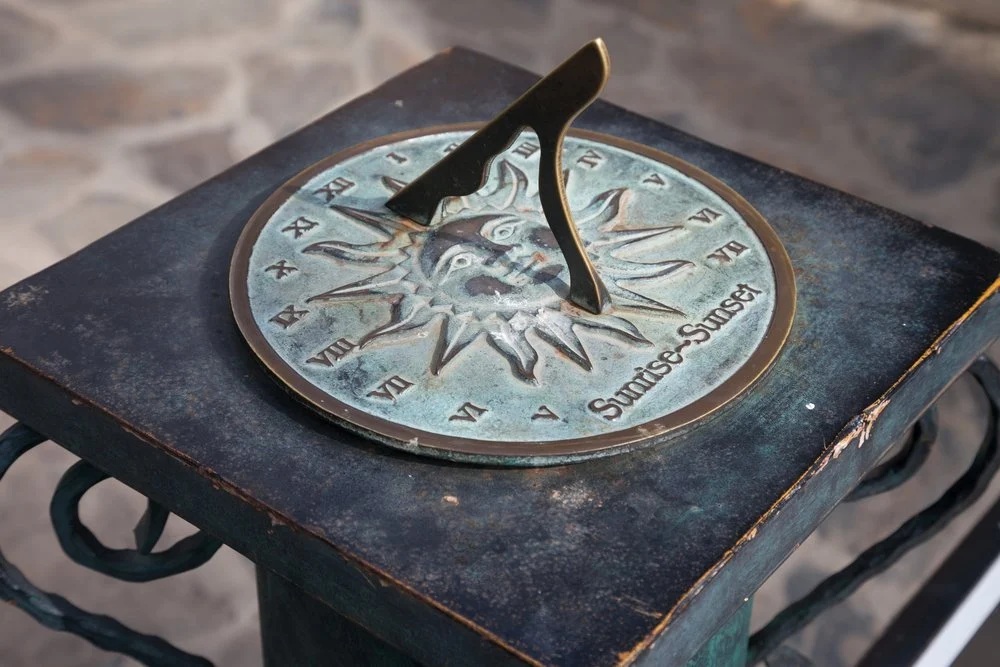The reason that there are 24 hours in a day and 60 minutes in an hour is because of the way that the Egyptians and Babylonians divided up the day. They used a base 12 and base 60 system, respectively, in order to make it easier to count on their fingers.
一天有24小时,一小时有60分钟的原因是因为埃及人和巴比伦人分割一天的方式。他们分别使用12进制和60进制,以便于用手指数数。
In recent years, what is one of the most common answers we give in response to any question we’re asked, request made of us, or suggestion of how we spend our time?
近年来,当我们被问到任何问题、被要求或者被建议如何使用时间时,我们给出的最常见的回答是什么?
Obviously, it comes as no wonder that we never have TIME to ever think about the TIME we have? Not even the TIME we have, but the way we organize it! Confused? Let me clarify.
显然,我们从来没有时间去思考我们所拥有的时间,这并不奇怪?甚至不是我们有的时间,而是我们组织它的方式!困惑?让我澄清一下。
Have you ever wondered why the wristwatch strapped to your arm (assuming you still use one), your mobile screen, or any other damn clock in the world shows 12 numbers signifying 12 hours? Why isn’t it some other random number, like 28 or 16? What is the significance of twelve in our perception of time? I mean, if you give it any thought, you can’t deny that our measuring system is pretty weird. Allow me to explain:
你有没有想过为什么手表会绑在你的手臂上(假设你还在用的话) ,你的手机屏幕,或者世界上任何一个该死的时钟上都会显示12个数字代表12个小时?为什么不是其他随机数,比如28或者16?在我们对时间的认知中,十二的意义是什么?我的意思是,如果你仔细想想,你不能否认我们的测量系统是相当奇怪的。请允许我解释一下:
- 24 hours are divided into two parts – a day lasting 12 hours and a night lasting 12 hours
- 24小时分为两部分——一天持续12小时,一夜持续12小时
- 1 hour contains 60 minutes, which also have 60 seconds each.
- 1小时包含60分钟,每小时也有60秒。
- Each second is then divided into 1000 milliseconds.
- 然后将每秒分为1000毫秒。
Now, that seems like a rather strange way to divide a day. No wonder kids have trouble learning how to tell time! However, as always, like every other thing in the world, there is a reason behind this too.
这样划分一天似乎有点奇怪。难怪孩子们学不会看时间!然而,就像世界上的其他事物一样,这背后也有一个原因。
The Impact Of Civilization
文明的影响
In today’s world, we widely use the decimal number system, a system that is believed to have originated because it made it easy for us to count things on our fingers. Back then, when humans were still exploring the wonders of nature and finding answers to their countless questions, many other numerical systems were commonly used. The Egyptians and Babylonians, who first divided the day into smaller parts, used duodecimal (base 12) and sexagesimal (base 60) numeral systems.
在今天的世界,我们广泛使用十进制数系统,这个系统被认为是起源于,因为它使我们很容易用手指数东西。那时,人类还在探索大自然的奇妙之处,寻找他们无数问题的答案,许多其他的数字系统被广泛使用。埃及人和巴比伦人首先把一天分成较小的部分,他们使用十二进制(以12为基数)和六十进制(以60为基数)的数字系统。
That obviously begs the question – why base 12 and base 60? The reason is very simple, yet quite surprising!
这显然引出了一个问题——为什么是12进制和60进制?原因很简单,但很令人惊讶!

Yes, believe it or not, the structure of our fingers is precisely the reason! The number of finger joints on each hand (excluding the thumb) makes it possible to count to 12 by using the thumb. Surprised at what a simple explanation that is? Well, things are going to get slightly more complicated…
是的,信不信由你,我们手指的结构正是原因!每只手指关节的数量(不包括拇指)使用拇指可以数到12。你很惊讶这么简单的解释吗?事情会变得有点复杂。
Why 24 Hours?
为什么是24小时?
Let’s try to understand this step-by-step. The 24-hour day concept comes from the ancient Egyptians. They divided the day into 10 hours with devices like shadow clocks and then added one hour at each end (one for twilight and one at the end of the day). Later, a T-shaped bar was made by Egyptians, which was calibrated to divide the time between sunrise and sunset into 12 parts.
让我们一步一步来理解这一点。24小时的概念来自古埃及人。他们用影子时钟之类的设备把一天分成10个小时,然后在每个小时的末尾增加一个小时(一个用于黎明时分,一个用于一天结束时分)。后来,埃及人制作了一个 T 形条,将日出和日落之间的时间分成12部分。

However, the absence of sunlight made it difficult to divide the time at night. It’s pretty interesting to learn how they managed to do this. Yes, nighttime division of time was based on the observation of stars! In those ancient times, with no sophisticated technology to use, they instead chose 36 star groups (small constellations) called ‘decans’, which rose consecutively on the horizon as the earth rotated. Each decan rose before sunrise and marked the beginning of a 10-day period. A total of 36 decans thus led to 36*10=360 days of a year. From one twilight to another, 18 of these decans were visible. However, each twilight period had 3 of these decans assigned, leaving 12 for the period of complete darkness (the duodecimal system is working here as well!). Thus, the rise of each decan marked an hour, so we ended up with 12 hours in each night.
然而,由于没有阳光,很难划分夜间的时间。了解他们是如何做到这一点非常有趣。是的,夜间时间的划分是基于对星星的观察!在那些古代,没有复杂的技术可以使用,他们选择了36个星团(小星座)称为“ decans”,它们随着地球的旋转在地平线上连续上升。每个十坎在日出前升起,标志着一个10天周期的开始。因此,总共36个十亿分之一因此导致一年36 * 10 = 360天。从一个黄昏到另一个黄昏,这些十八个可见。然而,每个黄昏时期有3个这样的 Decans,留下12个完全黑暗的时期(十二进制系统在这里也工作!) .因此,每个十分之一的上升标志着一个小时,所以我们结束了12个小时在每个夜晚。

However, at that time, the hours did not have a fixed length. The Greek astronomers who were then trying to find answers to the queries of the universe, existence, and stars and galaxies (in short… astronomers) found it difficult to manage calculations with the prevailing method. Then, Hipparchus gave us the “Equinoctial hours” by proposing the division of a day into 24 equal hours. Even then, for a long time, ordinary people kept using the seasonally varying hours. It wasn’t until the 14th century in Europe, when mechanical clocks came into use in Europe, that commoners began using the system that we practice to this day.
然而,在那个时候,小时并没有一个固定的长度。当时,希腊天文学家试图找到关于宇宙、存在、恒星和星系(简而言之,就是天文学家)的问题的答案,但他们发现很难用现行的方法进行计算。然后,Hipparchus 给了我们“昼夜平分时”,他提议把一天分成24小时。即便如此,在很长一段时间内,普通人仍然使用季节性变化的时间。直到14世纪的欧洲,当机械钟开始在欧洲使用的时候,普通人才开始使用我们今天使用的系统。
Why 60 Minutes And 60 Seconds?
为什么是60分60秒?
The Greek astronomers who helped us make life simpler by equally dividing 24 hours followed the Babylonian’s sexagesimal (base 60) system for astronomical calculations. So, for convenience, they further divided an hour into 60 minutes and each minute into 60 seconds. It is unknown why the Babylonians used a base 60 system, but it may be because 60 is a special number for fraction calculations. It is the smallest number divisible by the first 6 counting numbers, and also by 10,12,15, 20 and 30.
希腊天文学家帮助我们通过24小时的平均除法使生活变得更简单,他们遵循了巴比伦的六十进制(以60为基数)的天文计算体系。因此,为了方便起见,他们进一步将一小时划分为60分钟,每分钟划分为60秒。我们不知道为什么巴比伦人使用以60为基数的系统,但这可能是因为60是一个用于分数计算的特殊数字。它是可被前6个计数数整除的最小数,也可被10、12、15、20和30整除。
The concept of milliseconds is quite modern, and since we use a base 10 system, each second is divided into 1000 milliseconds.
毫秒的概念非常现代,因为我们使用以10为基数的系统,每秒被分成1000毫秒。
Now, isn’t that interesting? The elegant ideas of our ancestors still rule our day-to-day lives thousands of years later. Now go out there and flaunt your newly increased knowledge of time and make the best use of it!
这不是很有趣吗?数千年后,我们祖先优雅的思想仍然统治着我们的日常生活。现在走出去,炫耀你新增加的时间知识,并充分利用它!
原文地址:https://www.scienceabc.com/eyeopeners/why-are-there-24-hours-in-a-day-and-60-minutes-in-an-hour.html